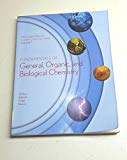
Concept explainers
Interpretation:
The three products are formed from pyruvate under aerobic, anaerobic and fermentation conditions should be explained.
Concept Introduction:
Aerobic and anaerobic: In the presence of oxygen or required oxygen to live.
Aerobic: The system that moves your blood through your lunges, where it is loaded with oxygen and then distributes it to every part of your body.
Anaerobic: It is a threshold is the exertion level between aerobic and anaerobic training. The AT is the point during exercise when your body must switch from aerobic to anaerobic
Fermentation: All cells are able to synthesis ATP via the process of glycolysis, in many cells, if oxygen is not present, pyruvate is metabolised in a process called fermentation. This process in which a substance breaks down into a simpler substance, the microorganism (yeast, bacteria) usually play a role in the fermentation process.
Want to see the full answer?
Check out a sample textbook solution
Chapter 22 Solutions
Fundamentals of General, Organic and Biological Chemistry Volume 1, 5th custom edition for Spokane Community College
- Which steps of aerobic metabolism of pyruvate through the citric acid cycle are control points?arrow_forwardWhat are the three fates of the pyruvate and list which one is aerobic or anaerobicarrow_forwardWhat is the cost (in ATP equivalents) of transforming glucose to pyruvate via glycolysis and back again to glucose via gluconeogenesis?arrow_forward
 BiochemistryBiochemistryISBN:9781319114671Author:Lubert Stryer, Jeremy M. Berg, John L. Tymoczko, Gregory J. Gatto Jr.Publisher:W. H. Freeman
BiochemistryBiochemistryISBN:9781319114671Author:Lubert Stryer, Jeremy M. Berg, John L. Tymoczko, Gregory J. Gatto Jr.Publisher:W. H. Freeman Lehninger Principles of BiochemistryBiochemistryISBN:9781464126116Author:David L. Nelson, Michael M. CoxPublisher:W. H. Freeman
Lehninger Principles of BiochemistryBiochemistryISBN:9781464126116Author:David L. Nelson, Michael M. CoxPublisher:W. H. Freeman Fundamentals of Biochemistry: Life at the Molecul...BiochemistryISBN:9781118918401Author:Donald Voet, Judith G. Voet, Charlotte W. PrattPublisher:WILEY
Fundamentals of Biochemistry: Life at the Molecul...BiochemistryISBN:9781118918401Author:Donald Voet, Judith G. Voet, Charlotte W. PrattPublisher:WILEY BiochemistryBiochemistryISBN:9781305961135Author:Mary K. Campbell, Shawn O. Farrell, Owen M. McDougalPublisher:Cengage Learning
BiochemistryBiochemistryISBN:9781305961135Author:Mary K. Campbell, Shawn O. Farrell, Owen M. McDougalPublisher:Cengage Learning BiochemistryBiochemistryISBN:9781305577206Author:Reginald H. Garrett, Charles M. GrishamPublisher:Cengage Learning
BiochemistryBiochemistryISBN:9781305577206Author:Reginald H. Garrett, Charles M. GrishamPublisher:Cengage Learning Fundamentals of General, Organic, and Biological ...BiochemistryISBN:9780134015187Author:John E. McMurry, David S. Ballantine, Carl A. Hoeger, Virginia E. PetersonPublisher:PEARSON
Fundamentals of General, Organic, and Biological ...BiochemistryISBN:9780134015187Author:John E. McMurry, David S. Ballantine, Carl A. Hoeger, Virginia E. PetersonPublisher:PEARSON





